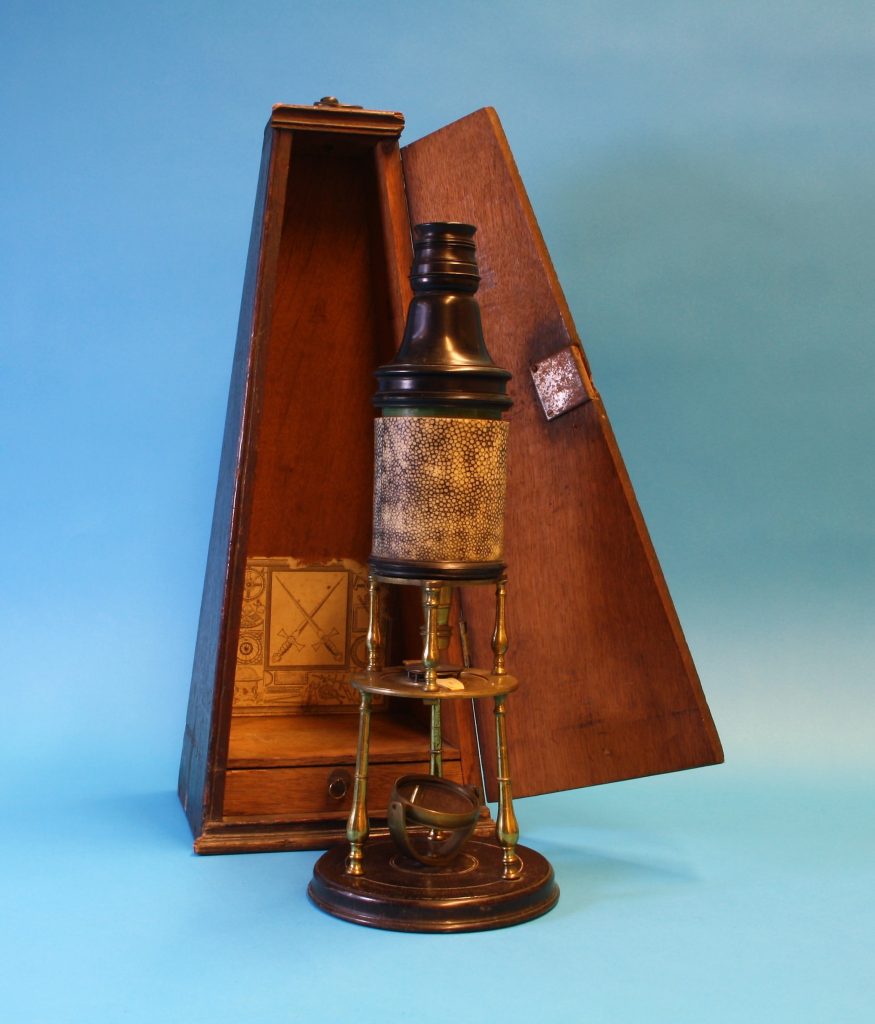
Edmund Culpeper (c. 1670-1738)
Edmund Culpeper was the son of a clergyman, Edward Culpeper of Gunville, Dorset. In 1684, he was apprenticed to Walter Hayes, an instrument maker whose business was located at the “Sign of the Crossed Daggers” in Moorfield, London. When Hayes died in 1685, Culpeper took the business over and continued using the same trademark for his business cards and advertisements. By 1725, he had moved to the “Black White House, Middle Moorfield” with another establishment “under the Piazza of the Royal Exchange”. As was normal at that time, he sold a wide range of products ranging from theodolites, sundials and mathematical instruments to simple and compound microscopes, many of which he bought from the original makers. Among his early products was a version of the popular screw-barrel Hartsoeker-Wilson single-lensed microscope for which he also designed and sold a stand. The microscope that now carries his name appeared around 1725. It was focused by pulling the tube up and down and had a tripod stand with a mirror underneath. This microscope was popular and was copied nationally and internationally. It remained in use for over 100 years, and its format became popular again at the end of the 18th century in the shape of the wooden Nuremburg microscopes (see “IM”).
Like Antoni van Leeuwenhoek, Culpeper attracted the attention of Peter the Great during his European tour and is believed to have provided the Czar with instruments.
His son, also Edmund Culpeper (c. 1700-after 1759) took over the business after his death.

Compound non-achromatisch microscope after Culpeper
CULPEPER
ca. 1735